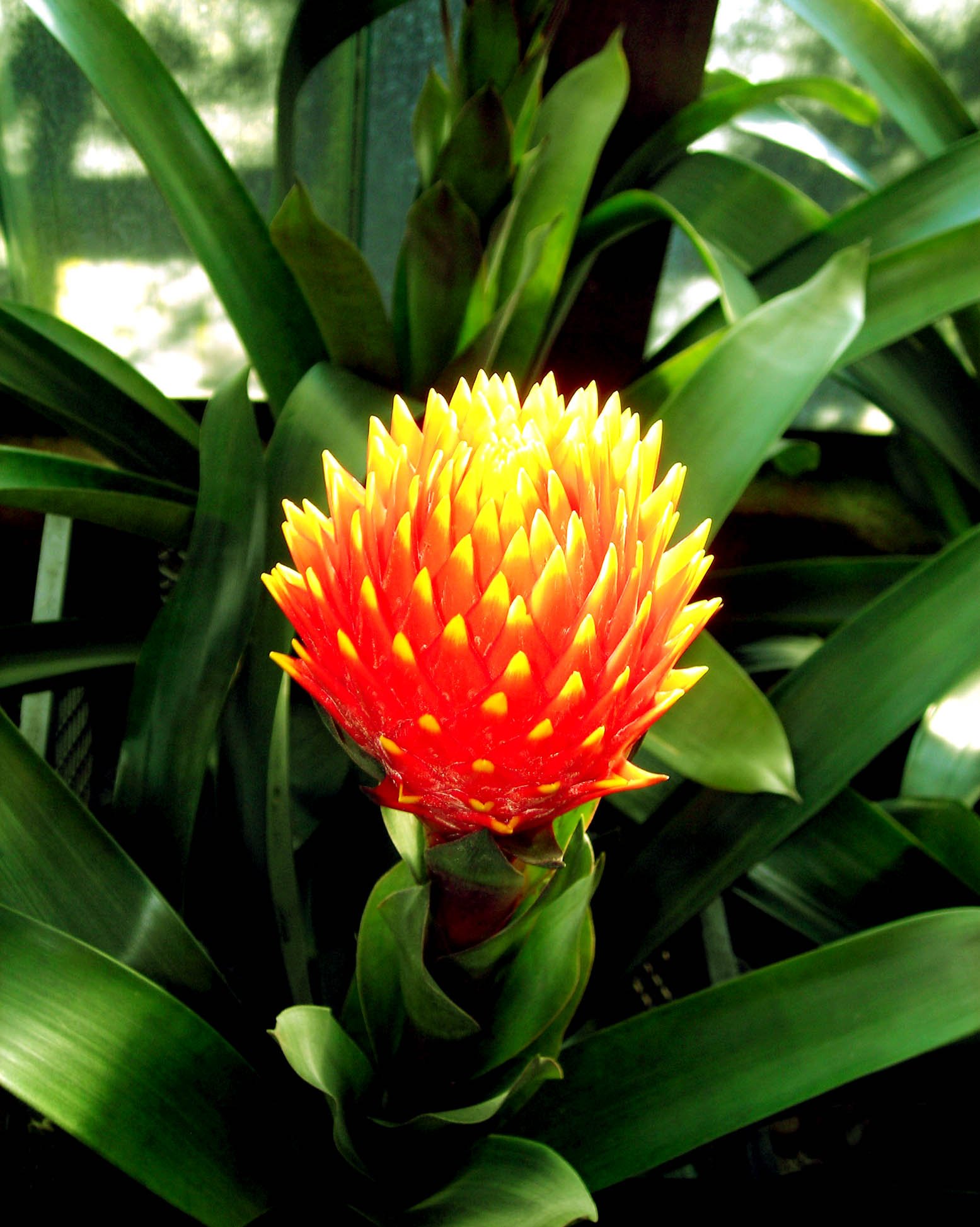
Bromelia plant care advice
There are more than 40 difference species in the Bromeliad plant genus. They are excellent for gardens and as potted plants alike. Some species are referred to as “pineapple plants” because of the way the leaves spike up like the head of a pineapple. This plant is not only special because of its beauty but also because the leaves start from soil level. The fact that they are easy to care for also makes then excellent gifts for all occasions and all recipients. Just remember these basic care tips when choosing this plant.
Sun
The light requirements of your Bromelia will depend on the type of plant you choose. Varieties with broader leaves will turn brown if exposed to excess sunlight. For those in the northern hemisphere, it’s best to place this plant in a south-facing window. Of course, in the south, the opposite is true.
Water
Regular watering is important but you don’t want to pour water in the plant’s “tank” area. This is the part of the plant created by the lowest leaves. If this area is full of water, it can cause the plant to rot. You should pour water onto the soil around the plant only.
Temperature
These plants are quite hardy and they can handle temperatures that range from 13 to 29 degrees Celsius. If they are exposed to low temperatures of up to -7 or high temperatures of up to 37, the plant will not suffer too much provided they are only exposed for a short period of time. The greater the humidity, the higher the temperature the plant can tolerate. This plant also needs sufficient air circulation.
Soil and fertilizer
Loamy soil is ideal since it offers fair drainage. The soil should remain moist but not too wet. If you grow the plant outside in your garden, it will need more fertilizer than the potted varieties. If you want professional advice, simply consult your local nursery expert.
Other important tips
Bromelias are not immune to pests. Ask your local nursery expert for the best solutions to keep bugs at bay. Keep a close eye on your plant so that you can spot any infestations before they cause devastating destruction. The main plant only blooms once but the smaller plants will take about 6 months to reach a third of the size of the main plant. Once they reach this size, they can be carefully removed and repotted.
